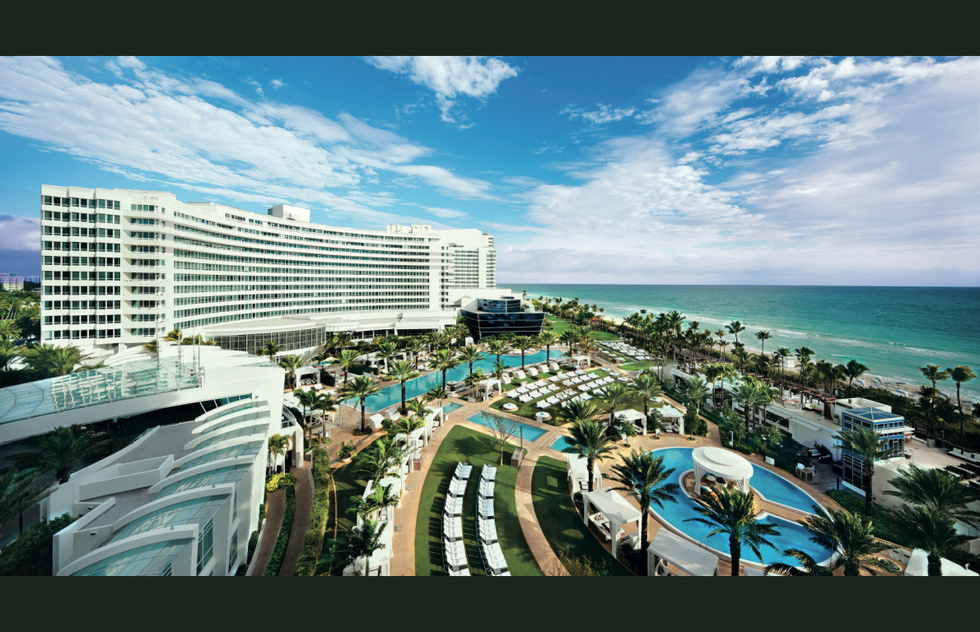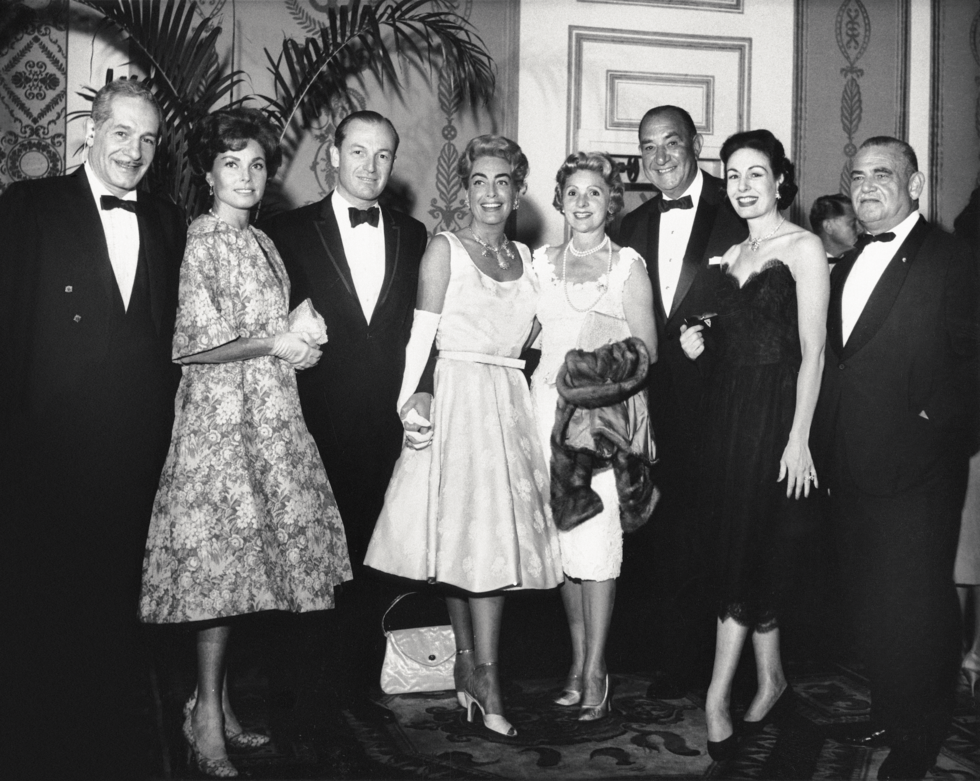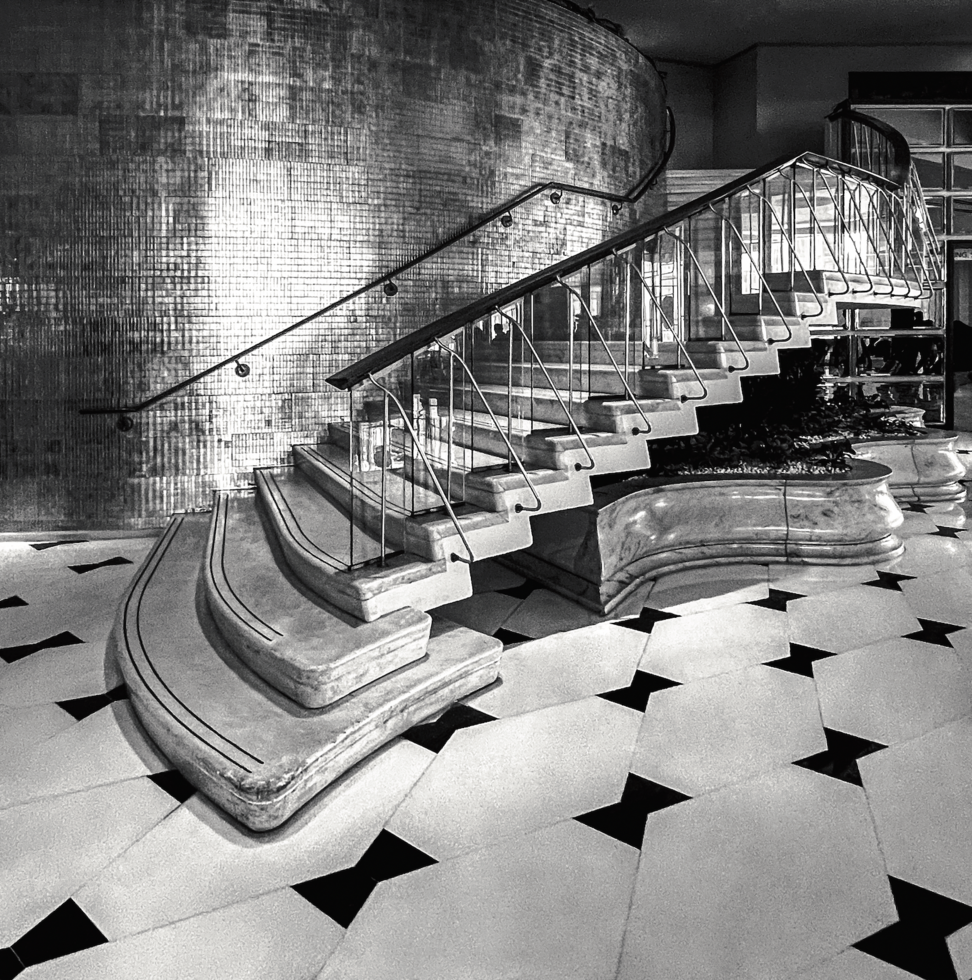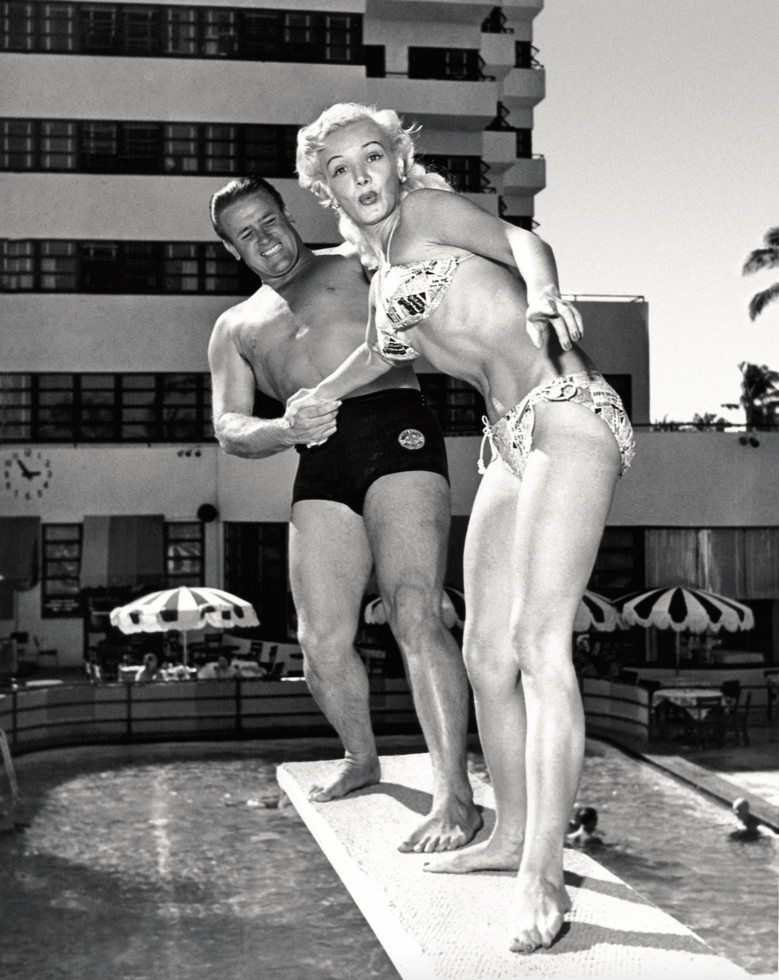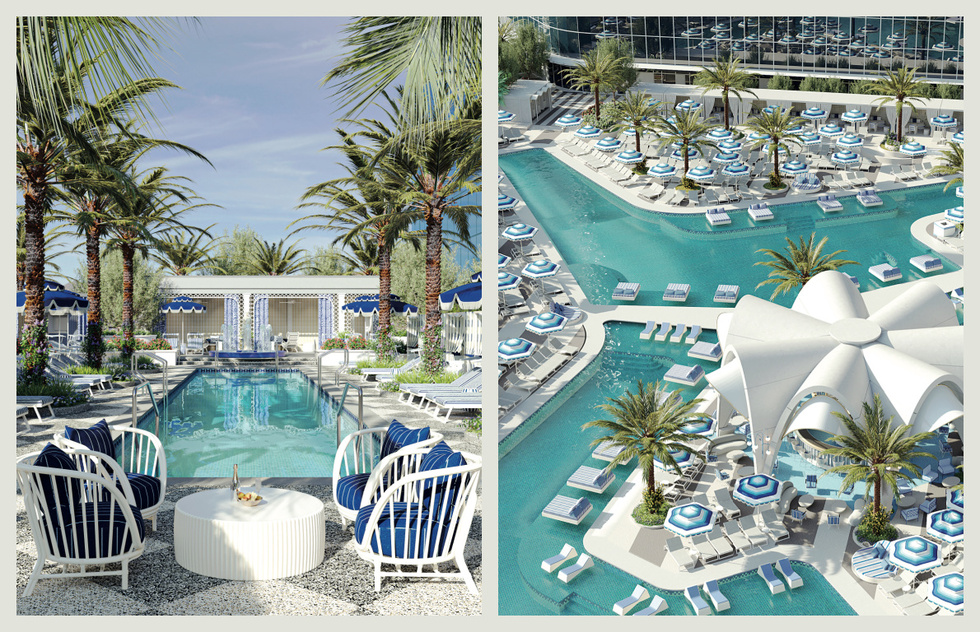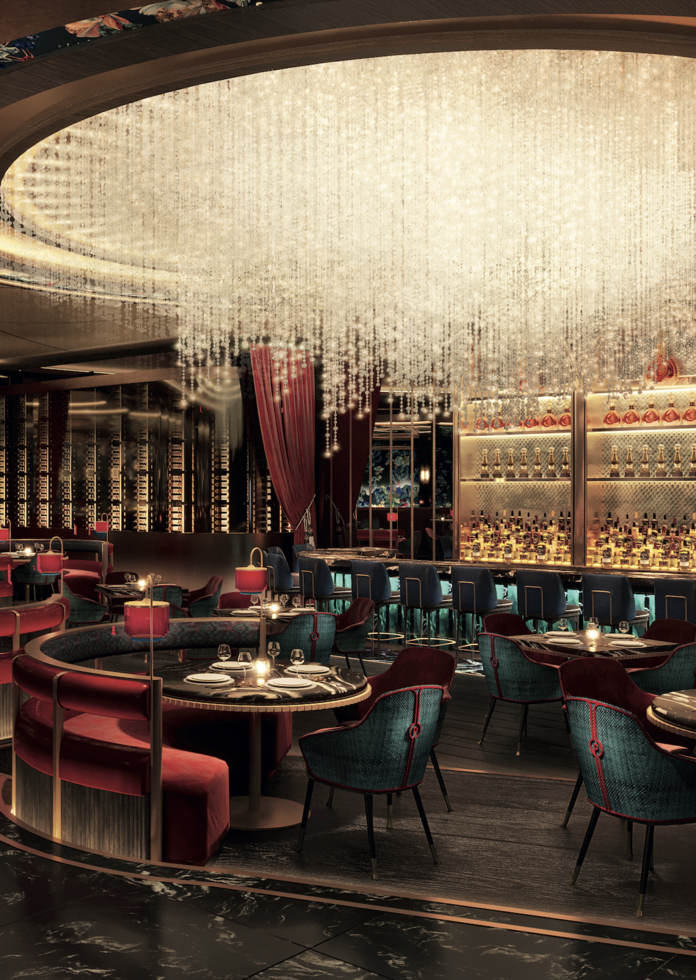Lavish Photo Book Celebrates Miami Fontainebleau Hotel History—and Vegas Future
By Zac ThompsonFebruary 9, 2024
"I wanted people to walk in and drop dead," said architect Morris Lapidus of his showy hotel designs, perhaps best exemplified by Fontainebleau Miami Beach, the oceanside behemoth distinctive for its curving exterior and glittery insides asparkle with glass, marble, and chandeliers.
The hotel's combo of splashy luxury and midcentury modernist curves, cutouts, colors, and columns turned out to be a "fitting symbol for the swagger and self-assured style of postwar America," writes Stephen Wallis in his entertaining historical essay accompanying 100 images in a lavish new coffee-table book called Fontainebleau (published by Assouline; $120).
Almost immediately upon opening its doors in 1954, the place became a locus of glamour, attracting celebrities and other jet-setters devoted to the see-and-be-seen arts.
The photo book documents the hotel's glitzy heyday as well as its subsequent decline in the 1970s, followed by a gradual but eventually triumphant comeback culminating in a billion-dollar makeover and expansion unveiled in the 2000s.
The book also covers Fontainebleau's latest chapter—the opening of a long-in-the-works sister property, Fontainebleau Las Vegas, which finally began welcoming guests in December 2023, almost two decades after the project was announced.
Scroll on to see a selection of images from the volume that provide a peek into Fontainebleau's past and present.
Hotelier Ben Novack (pictured on the left in the undated photo above, with his wife, Bernice, to the right) wanted his Fontainebleau, built on the former Miami Beach property of rubber tire magnate Harvey Firestone, to be a "magnificent beacon, radiating a seductive modern glamour that harmonized with Hollywood, popular music, consumer culture, and the vitality of postwar America," Wallis writes.
Celebrities of the '50s and '60s certainly heeded the call, with stars such as Joan Crawford (pictured above, in the center of course), Elizabeth Taylor, Marilyn Monroe, and John F. Kennedy all checking in at various times. The latter pair were rumored to book adjoining suites.
Frank Sinatra and his Rat Pack cronies were regulars. In 1960, Sinatra, who often headlined at the hotel's La Ronde supper club, taped a TV performance with Elvis Presley in the Fontainebleau's grand ballroom. Talk about checking all the postwar pop-culture boxes.
Among the hotel's onscreen credits: three Sinatra movies; Scarface (1983); TV's Miami Vice (inevitably); The Bodyguard (1992); and the 1964 James Bond outing Goldfinger, in which Shirley Eaton's character is memorably discovered in 007's hotel room, having become, as Wallis puts it, "a victim of death by gilding."
In his memoir, Lapidus wrote that he designed the Fontainebleau as if it were a big-budget movie set. Crucial to that conception was the famous Staircase to Nowhere (pictured above) connecting the lobby to a cloakroom on the mezzanine level. The real purpose of the winding marble stairway, though, is to give guests who take the elevator to the mezzanine the chance to make a grand descent as in some lavish Technicolor spectacle. (Also visible above is the recurring bow-tie motif in the hotel's marble flooring, a self-referential nod to Lapidus's trademark neckwear.)
Having made your big entrance, you could have cocktails in the Poodle Lounge, followed by dinner in the Boom Boom Room (recommended by Frommer's in 1961 for its distinctive mix of Cantonese cuisine and jungle decor), a show at La Ronde, and late-night snacks at the 24-hour Chez Bon Bon.
None of those venues remain today, though the hotel maintains its commitment to extravagance in spaces such as the 40,000-square-foot Lapis Spa and, where La Ronde used to be, the nightclub LIV (the year Fontainebleau opened, '54, in Roman numerals), where celebrity DJs and chart toppers supply a thumping soundtrack for parties into the wee hours.
"Days at the Fontainebleau were filled with sunbathing, card games, and mah-jongg by the pool, punctuated by dips in the ocean, maybe a plunge off the high dive for the bold," writes Wallis. Various outdoor features came and went over the years, such as a three-story cabana structure, a bowling alley, a skating rink, formal gardens, and, during the hotel's middlebrow '80s era, a water park.
Lapidus wasn't involved in Fontainebleau's later expansions, having earned the eternal hatred of owner Novack for designing the nearby Eden Roc hotel. Novack got his revenge by having a new 14-floor tower erected on his property, with a windowless north-facing "Spite Wall" engineered, Wallis writes, to cast shadows onto the Eden Roc's pool deck each afternoon.
Pictured above: undated photo of professional diver Charlie Diehl and friend at Fontainebleau Miami Beach
Novack's efforts to add a casino to his Miami Beach hotel were stymied by Florida gambling laws. The push wasn't helped, Wallis suggests, by Fontainebleau's rumored ties to the Mafia in the early days.
With the December 2023 opening of Fontainebleau Las Vegas, though, there is at last a Fontainebleau casino, albeit on the Las Vegas Strip instead of Miami Beach's Collins Avenue.
The 67-floor Vegas tower was in the works starting in 2005, but the project ran aground due to the 2008 financial crisis, kicking off several years of legal battles and other delays until being reacquired by a group led by billionaire Jeff Soffer, who presided over the Miami Beach property's overhaul in 2008.
In addition to a casino, Fontainebleau Las Vegas has 3,644 guest rooms, a 4-acre pool deck (pictured above), its own iteration of the LIV nightclub, and more than two dozen bars and restaurants.
The Vegas property pays tribute to Lapidus, who died in 2001, by incorporating many of the architect's "design signatures," writes Wallis. There are fluted columns, cheese-hole cutouts, unique curves and blobs, "theatrical cove lighting," arched mirrors, tiered crystal chandeliers, and "bow-tie motifs aplenty."
Soffer has hinted that other Fontainebleau outposts could follow. We're guessing he hopes the next one won't take 20 years to build.
Pictured above: Papi Steak, a restaurant at Fontainebleau Las Vegas
Fontainebleau, published by Assouline, features 100 images and text by Stephen Wallis. The book is available in hardcover for $120 from bookstores, online booksellers, and Assouline.com.





